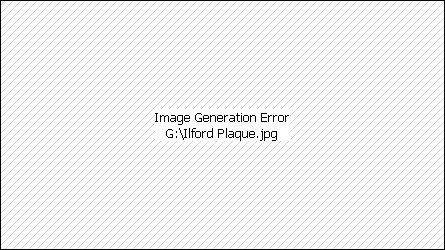Barking and District Historical Society
Main menu
- Welcome
-
Latest News
- Next Talk
-
Chairman's Notes
- May 2016
- April 2016
- March 2016
- February 2016
- December 2015
- November 2015
- October 2015
- September 2015
- June 2015
- May 2015
- April 2015
- March 2015
- February 2015
- December 2014
- November 2014
- October 2014
- September 2014
- June 2014
- May 2014
- May 2014 AGM
- April 2014
- March 2014
- February 2014
- December 2013
- November 2013
- October 2013
- September 2013
- June 2013
- May 2013
- April 2013
- March 2013
- February 2013
- December 2012
- November 2012
- October 2012
- September 2012
- June 2012
- May 2012
- April 2012
- March 2012
- Notes & Queries
-
What's On
-
Programme
- Programme 2016/2017
- Programme 2015/2016
- Programme 2014/2015
- Programme 2013/2014
- Programme 2012/2013
- Programme 2011/2012
- Talks 2014/2015
- Talks 2015/2016
- Talks 2016/2017
- Events
-
Programme
-
The Society
- About BDHS
- Barking Visit 1935
- English Heritage Partner Award
- Membership
- History of Society
- 80th Anniversary Talk
- 80th Anniversary Display
- Officers
- First Members
- Constitution
- Contacts
- Chronology
- Newslettter Contents
- Chairman's Reports
- Accounts
- Equal Opportunities Statement
- AGM Reports
- Publications for Sale
-
Articles
- Reminiscences
-
Barking & Dagenham
- Austin's
- Barking Brewery
- Barking Sewage Works
- Barking Signal Box
- Christmas Memories
- Contrasts
- Coronation Memories
- Dagenham Town Show
- Movers Lane Estate
- Evacuees
- Hospital
- Our Borough's Rich Past
- Nepton Charity
- Some Barking Lives
- St.Margaret's Church
- Some VC Heroes
- What's beneath our feet?
- Tom White's Interviews
- Tuck Postcards
- Yorkshire Regiment
-
People
- A-D
- E-K
- L-R
- S-Z
- Food
- Sport
-
Vic's Memories of Barking
- Barking Cinemas
- Barking Park Annual Fair
- The Dilema of Immigration
- Driving
- Food Watching
- Great Smog
- A Musical Journey
- National Service
- Our Street
- The Pesci Story
- Schooling in Barking during the forties and fifties
- Theatre
- Time for Revival?
- A Town Hall Mystery
- Transport in Barking
- Trains
- A Wartime Childhood
- Wheels of Our Time
-
Pictures
-
Barking
- Barking A-D
- Barking E-K
- Barking L-R
- Barking S-Z
- Barking Park
-
Churches
- All Hallows by the Tower
- Dagenham Central Hall
- Roman Catholic Church
- St.Alban's Becontree
- St. Margaret's
- St. Mary's Becontree
- St. Patrick's
- St. Paul's Barking
- St. Thomas' Becontree
- St. Mary's Ilford
- Disasters
- Entertainment
- Eastbury House
- Outings
- Becontree
-
Chadwell Heath
- Chadwell Heath A-D
- Chadwell Heath E-K
- Chadwell Heath L-R
- Chadwell Heath S-Z
-
Dagenham
- Dagenham A-D
- Dagenham E-K
- Dagenham L-R
- Dagenham S-Z
- East Ham
- Ilford
- Members' Pictures
- Public Houses
- Valence
- Frank Tingey's Drawings
-
Barking
- Links
Sir Antonio Brady

Antonio Brady (1811-
Sir Antonio Brady (1811-
Brady’s parents were Anthony Brady (1777-
Antonio Brady was a civil servant in the Admiralty. He steadily progressed and eventually became Superintendent of Contracts shortly before he retired in 1870. Brady was knighted shortly after his retirement. He travelled widely. Brady was a Conservative and active member of the Church of England. He was educated at Colfe’s school Lewisham. Brady started to collect Pleistocene mammalian fossils from Ilford about 1844. He devoted a large amount of his spare time and money to search for and dig up fossil bones. Mrs. Mary Curtis, the wife of the owner of an Ilford Brick Pit would send Brady a letter when the quarrymen uncovered any bones. His finest specimen, found in 1864, was a complete mammoth skull with both tusks. Brady relinquished his claim to this specimen in favour of the British Museum. He spared no effort to excavate the fragile fossil bones and used plaster of Paris, strong boards and nail bar iron. Brady eventually sold his specimens for £525 to the British Museum in 1874. A catalogue of his specimens, compiled by William Davies (1814-
Sources
Brady, N. and Woodward, H. 1882. In Memoriam: Sir Antonio Brady, J.P., F.G.S., &c. Transactions of the Essex Field Club. Vol. 3 pp.94-
George, W. H. 1999. Sir Antonio Brady (1811-
Fossil Collection at Natural History Museum; Museum of London.
Archives: Some letters at Natural History Museum. Some Family Papers at Essex Record Office, Chelmsford.
Likeness: Brady, N. and Woodward, H. 1882 p. 95.
Wealth at Death: Estate valued at £21,337.




Lithograph drawings of mammoth mandibles collected by Sir Antonio Brady from Ilford Essex.
Largest jawbone is more than 80cm wide
Source: A. Leith Adams Monograph of the British Fossil Elephants Part 2 1879 plate 8. Palaeontographical Society

Fossil Rhinoceros Skull and Mandible
Collected by Antonio Brady
Length about 80cm

Line Drawing of Sir Antonio Brady's Brass Memorial Plaque
St. John's Church, Stratford Broadway

Line drawing of stolen bronze plaque
formerly on Methodist Church Hall in Ilford Lane






Thomas Curtis was the owner of some of the Ilford Brick Pits. When large bones were found Mrs. Curtis would write to Antonio Brady. He would them arrange for the fossils to be removed and compensate the labourers for any loss of wages.